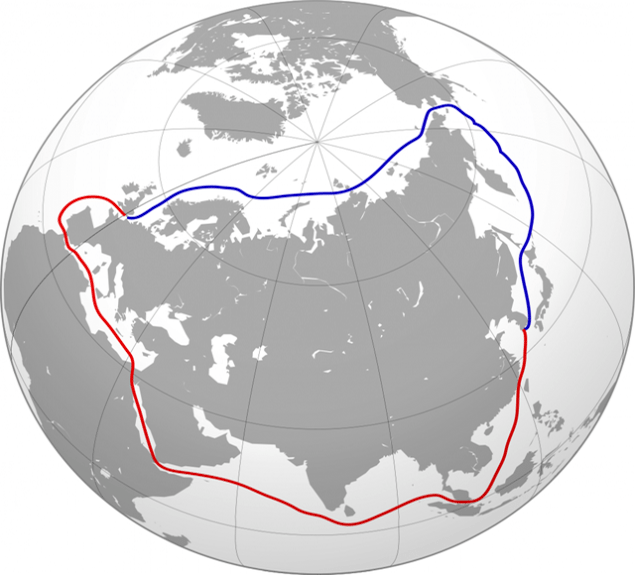Viking Shares Surge in NYSE Debut
By Mehnaz Yasmin and Granth Vanaik May 1 (Reuters) – Shares of Viking Holdings rose 9% in their debut on the New York Stock Exchange on Wednesday, giving the travel and cruising company...


Northern Sea Route vs Southern route.
LONDON, Oct 10 (Reuters) – The world’s top oil trader Vitol has brought tankers with Asian diesel to Europe via the Arctic Ocean, a journey rarely used for oil, in yet another evidence the route is wide open for commercial trade due to thawing sea ice.
The Swiss-based trader booked two 90,000-tonne ice-class tankers to ship gasoil and diesel from South Korea to the Rotterdam area, traders said.
Propontis sailed out on August 20 and is currently in the North Sea, while Zaliv Amurskiy left South Korea on September 12 and is now in Laptev Sea, according to Reuters AIS Live ship tracking.
According to shipping data, Vitol booked the 30,000-tonne tanker to unload the product from the Propontis mid-sea outside the Rotterdam port, in what is known as ship-to-ship transfers.
Vitol declined to comment on the shipments.
Diesel, gasoil and jet fuel regularly flow from South Korea to Europe on the traditional route passing through the Suez Canal which lasts around 40 days.
Traders have in recent weeks wanted to capitalize on the growing demand for diesel in Europe as a result of a drop in local production due to seasonal refinery maintenance.
And while naphtha cargoes often move in the reverse direction from Russia to Asia, few tankers have been used on the west-bound route, traders said.
The Arctic route through the Baring Strait could take as little as 22 days, according to traders, potentially saving hundreds of thousands of dollars.
It nevertheless also entails higher costs and risks of delays due to ice.
The route, opened for commercial trading only in recent years as a result of thawing sea ice, is open for no more than four months a year.
The ice-class tankers are fitted with thicker hauls and have ice-breakers attached to pierce through ice as they move.
“This can save about 15 days of voyage at least. It costs about $400,000 to charter such ice-breaker ships. So you have to add this cost to the freight cost and so total cost will probably be about the same as shipping via the Suez route,” a Singapore-based ship broker said.
“Sometimes, companies can shave about $100,000 to $150,000 on freight costs since it is faster. It might not be a lot but they save a lot on time and this could work for traders who want to capitalize on arbitrage movements, especially when the window is short,” he said. (Additional reporting by Jessica Jaganathan in SINGAPORE; editing by James Jukwey)
© 2013 Thomson Reuters. All rights reserved.
Join the gCaptain Club for curated content, insider opinions, and vibrant community discussions.


Join the 105,829 members that receive our newsletter.
Have a news tip? Let us know.
Access exclusive insights, engage in vibrant discussions, and gain perspectives from our CEO.
Sign Up




Maritime and offshore news trusted by our 105,829 members delivered daily straight to your inbox.



Essential news coupled with the finest maritime content sourced from across the globe.
Sign Up